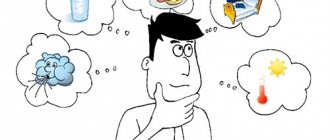It is no secret that we enter into a relationship with another person in order to mutually satisfy each other’s needs. And the more our needs in a relationship are met, the happier the relationship is.
Some of our needs in relationships are basic, basic. That is, they are characteristic of all people.
And in this article I will talk about such basic needs in relationships. I’ll tell you what skills are important to master in order for these and other needs to be satisfied in our relationships.
I’ll tell you about a recurring traumatic scenario, when we build painful relationships over and over again, in which some of our important needs are not met. For what reasons do we reproduce such a scenario in our lives? I will also tell you how to get out of such a traumatic scenario.
Our relationship needs:
- Need for emotional and physical safety
- Need for communication
- Need for secure attachment and love
- Need for intimacy
- Need for attention
- Need for care
- The need for support and sympathy, to express one’s feelings
- Need for gentle touch
- The need to be needed
- Need for acceptance
- Need for recognition
- Need for respect
- The need to be significant to others
- Need for approval, praise, positive evaluation
- Need for understanding
- The need for feedback, mirroring
- The need to belong to a group
- The need for personal space and freedom
- The need for power and influence.
Classification of human needs
In psychology, all human needs are usually divided into three groups. This classification is quite unambiguous, since each group has very specific and obvious criteria. Let's look at each of them in detail.
Biological needs
This category includes basic needs aimed at survival, achieving physical comfort and procreation. It includes:
- delicious food (taste is important to determine freshness and nutritional value);
- clean water to quench thirst;
- comfortable living conditions;
- security and confidence in your future;
- satisfaction of sexual needs.
The listed aspirations are present in all living beings. They were formed evolutionarily to ensure the survival of the population. Essentially, they are all mechanisms that allow a person (or other creature) to survive and achieve “reproductive success” (produce offspring and ensure their survival in the future).
Social needs
Since man is a social being, he has a number of instinctive aspirations aimed at increasing his own importance in society or his group. The most illustrative examples are:
Self-identification. A person associates himself with his social group, while striving to recognize himself as an individual with special personal and other qualities.
Self-affirmation. It is important for any person to be proud of their own actions and achievements, as well as to feel respect from others.
Altruism and passionarity. Most of us derive pleasure from doing things that benefit other people or society as a whole. At the same time, self-esteem grows even if our contribution goes unnoticed by others, since for an altruist the act itself is important, and not the approval of others.
Spiritual Needs
There is a system of universal spiritual values that most people share in one way or another. We strive for moral and spiritual growth, appreciate beauty, grace of form and harmony, enjoy contemplating objects of art and listening to beautiful music. At the same time, each person has his own taste, so we all like different styles in music and styles in painting. In addition, priorities of spiritual values change throughout life.
Spiritual needs include:
Self-actualization. Obtaining new knowledge, expanding the range of interests and hobbies, professional growth, advanced training - these are all natural aspirations for a person who is currently not concerned with satisfying basic biological needs.
Self improvement. As we grow up, we understand that we like to become better not in order to please someone, but simply to feel our progress. We give up smoking and alcohol, take up sports, begin to maintain a daily routine and control our stress levels. We just like to think that we're getting a little better every day.
Romantic love. This point could be considered a manifestation of the reproductive instinct, but for us it is something much more
It is very important for us to have a loved one nearby who inspires us and gives us not only sexual but also emotional pleasure.
Spiritual needs, unlike biological and social ones, are present only in humans. Moreover, their list is not just extensive, but almost endless, since each person finds some of his own hobbies that do not have to be shared with someone else. Some people like fishing, some prefer knitting, some watch TV series, some reread The Little Prince for the hundredth time, some adore the sound of pouring rain outside the window, and some experience peace from the echoing the croaking of frogs in a nearby pond.
The need to give and the need to receive
Our relationship needs can be roughly divided into:
- The need to “give” to another.
- The need to “receive” from another.
That is, we all need not only to receive something from other people (warmth, protection, support, care, sympathy, help), but also to do something for others ourselves (help them, show care, support, hug, say kind words).
In order for us to feel happy and satisfied in a relationship, both of these aspects are important. So that in a relationship we can both receive something from our partner and give it to him.
And no matter how strange it may seem, not in all relationships there is an opportunity to freely give and freely receive.
Some people do not know how to accept and internally “assimilate” what their partner gives them - support, care, attention, warm touches, gifts, help, recognition, pleasant words, etc.
And when their partner tries to do something for them, instead of joy and gratitude, they experience severe awkwardness, irritation, mistrust, a desire to push him away, bewilderment, etc.
This happens when a person is not used to receiving it. When he grew up in a family where he was not given this. Or when he was severely traumatized by something that for him is associatively connected with these actions. For example, his parents gave him attention, but they did it through shouting and swearing. Or he was given warmth and support, and then betrayed. Or they hugged him and then started harassing him.
And then, unconsciously, a person associates some pleasures with pain. That is, associations are formed in his psyche that attention = violence, support = betrayal, hugs and touches = sexual violence.
And then, when he reacts negatively to pleasant things, he actually reacts not to them, but to what these pleasant things are associated with on an unconscious level.
It also happens when people do not know how, on the contrary, to “give.” They do not know how to support another person, care, hug, help, pay attention, give gifts, give recognition, say nice words, etc.
This may be due to the fact that it was not customary to do this in the person’s family. When he himself did not receive this from his parents, and therefore did not learn. Or if his parents didn’t know how to “accept” when he tried to do something nice for them. And then the person learned to behave coldly and indifferently in order to protect himself from repeated rejection of his care.
The inability to “give” can be manifested quite strongly, and then a person may very rarely do anything for other people and may give the impression of a cold and inaccessible person.
Or the inability may extend to some specific actions - for example, a person may not be able to provide support, but at the same time be able to give gifts.
It’s the same with the inability to accept. It can concern many things, and then it is generally difficult for a person to be in a relationship where he is not rejected. Or it can be narrower, when a person does not know how to accept and internally assimilate some specific things - for example, he does not know how to accept support, or gifts, or care.
Role/mask 2. Scapegoat.
There is a parable about the scapegoat, which says that the priest of a village took a goat and blamed all the sins of that village on it. Then they took the goat into the desert, where it slowly died of thirst, as if through its suffering it cleansed the village of sin.
In a family, such a child is burdened with a lot of guilt and responsibility. You may find that the child, who, however, was not expected in this world, is to blame for all the troubles in the family. Then, in different ways, the parents take it out on the grief-stricken child for their failed life - “if it weren’t for you, then I...”!
Often, in order to achieve their failed goals in life, parents “out of good intentions” use the child without taking into account his interests. There are a limitless number of examples that can be given. The main slogan of such parents is: “I’m trying for you,” “I know better what’s good for you.” In any case, the child fulfills his role as a “scapegoat” for his parents.
“I don’t suffer for myself” is the slogan of such a child. Such a child is very hostile and does not obey his elders. By type of character, he is touchy, gloomy, angry, and has very low self-esteem. In order to receive surrogate recognition, love, approval, he attracts attention through negative behavior. He can easily break glass at school with a stone, and all in order to attract the attention of teachers, parents, and peers. Since people pay attention to it, it means it is significant.
The metaphor is that the pendulum doesn’t really care which side you swing it from.
How to learn to “accept”?
- Start regularly tracking and noticing when other people do something nice for you. Each time, note what reactions the pleasant thing they did for you will cause you. Be aware of what you felt, what you thought, what sensations appeared in your body in response to this, what images arose in your mind.
- Notice how you interpret situations when other people do something for you. What meaning do you attach to these situations? And also think about why you interpreted this situation this way. How does this relate to your story, your past experiences?
- Work through (preferably with a psychologist) traumatic situations from the past that cause you to react negatively when other people do something nice for you.
- Learn to directly ask others for what you need. Don't wait for the other person to figure it out and give you what you want from them. Help other people do nice things for you - tell them what you want and directly (but politely) ask them to do it for you.
Human needs - what are they?
Need is the need for any goods: material things, other people, and other signs, without which a person feels unsatisfied.
For the transition of neediness to the stage of need, certain things must happen:
Lack of need provokes irritation. A need is a real desire.
Manifestation of emotions: primary negative manifestations before happy ones after the set goal has been achieved. When we really want something very badly, we worry, we begin to sound the alarm, and when we achieve our goals, we begin to enjoy peace.
Focusing on the object of need. Our subconscious takes out those moments that can really satisfy us. For example, if we are thirsty, we will constantly think and focus on water.
The concept of needs is created according to certain laws:
- All creatures inhabiting the Earth have needs. However, the more mature the creature, the higher the degree of neediness. Plants need enough minerals from the soil, sun rays and regular fluid intake in the form of water. A person needs much more.
- The higher a person’s age, the broader his thinking and the greater his needs. A very young child does not need some things that an adult uses.
- Needs have a tree-like system, some are primary, others are secondary.
All actions and behavior of people are justified by the presence of any needs that are their drivers in life. The desired goal for a person is largely his motivation, which forces him to make decisions and move in the set direction according to the written plan. Everything that has been developed today by people in all fields of activity is the result of actions to achieve pleasure.
The inability to achieve needs can lead to attachment from their magnitude for a person to such different results:
The physical death of an individual in the event of lack of satisfaction requires food, sleep, oxygen, ordinary protection, and so on;
Disorder of intentions. A long-term nervous condition can lead to enormous mental disorders.
Sublimation. Relieving worries and transferring energy to achieve socially accepted goals. For example, the lack of sex life is compensated by sports, painting or other creative activities.
In this case, you need to feel, accept, and strive to fulfill them.
How to learn to “give”?
- Accept the fact that deep down you have a need to do something important for others. And that when you do something for others, you satisfy that need, your own need. Recognize that you cannot feel fulfilled in your life and relationships unless you give yourself permission to “give” to other people.
- Think about what exactly you are afraid of when you are afraid to “give” to other people. What terrible, unpleasant, painful thing could happen if you stop being cold and unavailable?
- Ask your loved ones to acknowledge and thank you whenever you do something for them. Share with them that it is very important for you to receive positive feedback from them and that it motivates you to care more about them.
- Monitor these positive reactions and accumulate this experience within yourself when people express gratitude in response to your niceties. Again and again, collect within yourself the experience that proves that people are pleased, that they like it when you do something for them.
Problems of self-realization
Unfortunately, today we must state the fact that the problem of personal self-realization remains insufficiently studied and developed, since there is no holistic theory of self-realization as a social process. However, it is possible to identify typical problems of self-realization that an individual faces along the path of life.
In adolescence, every teenager dreams of growing up and becoming a big businessman or a famous actor. However, life, society and even parents always make their own adjustments. After all, modern society does not need thousands of actors and big businessmen. For its progress and prosperity, society needs individuals who have masterfully mastered working professions, accountants, drivers, salesmen, etc. Due to the discrepancy between what is desired and the unpleasant reality, the first problem of self-realization is born. Yesterday's teenager, living in dreams, has to make a difficult choice between a business that interests him and a profitable profession. The second difficulty is the inability to correctly determine and choose the most suitable field of activity after graduation. Often many people do not understand that the areas of self-realization can be different. If an adult individual has become a professional surgeon, and not a famous actor, as he dreamed of as a child, this will not mean that he was unable to self-realize in the profession. The areas of self-realization are quite extensive; an individual can realize himself not only in the profession, but also in the role of a parent, spouse, in creativity, etc.
In order to solve the problem of self-realization, you should not try to plan your whole life in adolescence. Also, when the first difficulties appear, you don’t need to give up, change or sell your dream for good money.
After determining the professional activity, the subject faces the next problem of self-realization, which consists in his perception of the possibilities of his work and professional activities as a condition for further full-fledged personal growth.
Basic Relationship Needs
Richard Erskine identified the basic relationship needs that we all have. These are the needs that we satisfy precisely in contact with each other, for the sake of which we enter into relationships. We can say that our relationship with another person is based on these needs, and thanks to them, these relationships develop.
Eight Relationship Needs (according to Richard Erskine):
- Need for security.
- The need for recognition of our value.
- The need for a strong and reliable friend who can protect and support us.
- The need for community, for sharing experience.
- The need for self-determination, to be unique.
- Need for influence.
- The need for initiative from another.
- The need to express love.
1) The need for security - it is important for us to feel physically and emotionally safe. So that in relationships we can be open, sincere and vulnerable without the risk of being hurt by it. So that we can be ourselves around another person, so that it is safe for us.
2) The need for recognition of our value - it is important for us to feel significant to another person. So that in relationships our feelings, desires, needs, meanings, values, fantasies, our views, opinions are recognized as important and valuable. To be accepted as we are. And so that they are sincerely interested in us.
3) The need for a strong and reliable friend who can protect and support us - we want in a relationship to be able to sometimes rely on another person. So that this person is reliable and stable, even when we ourselves are unstable. Could give us support and provide protection.
4) The need for community, for sharing experiences - we need to be able to communicate with people who are similar to us. Who have life experiences similar to ours. Those who are experiencing or have experienced something similar to us. Who understand and can share with us our feelings, our problems and our joy.
5) The need for self-determination, to be unique - it is also important for us to show our individuality in relationships and receive confirmation that we are unique. We need our differences and our differences to be accepted. This need is the opposite of the previous one. That is, we want to simultaneously feel our uniqueness, and at the same time we want to feel our community, similarity with other people.
6) The need for influence - we have a need to see that we influence other people. That our feelings, thoughts, ideas, values, manifestations, qualities, our experiences, our words somehow affect others. That it means something to others and has some effect on them.
7) The need for initiative from another - we want the other person to sometimes take initiative in relations with us. So that someone would be the first to be interested in how we are, the first to initiate meetings and communication with us. The first one did something for us. So that not only we ourselves take the first steps towards others, but they too are the initiators of getting closer to us.
 The need to express love - it is important for us to be able to give love to other people, do something for them, express our warm feelings to them. We want relationships where we freely give and receive love. But this need of ours can only be satisfied when our other seven basic needs are satisfied.
The need to express love - it is important for us to be able to give love to other people, do something for them, express our warm feelings to them. We want relationships where we freely give and receive love. But this need of ours can only be satisfied when our other seven basic needs are satisfied.
- 2.1. Physiological needs
- 2.2. Needs for security and confidence in the future
- 2.3. Social needs (needs of belonging and involvement)
- 2.4. Need for respect (recognition and self-affirmation)
- 2.5. The need for self-realization (self-expression)
- 2.6. Self-actualization assessment
Chapter 2. Hierarchy of human needs. Maslow's model
None of the existing theories of motivation has such an impact on the thinking of managers as the theory of needs, developed by the great motivation specialist Abraham Maslow.
Maslow's theory allows managers to more fully understand the aspirations and motives of employee behavior. Maslow proved that people's motivation is determined by a wide range of their needs. If earlier managers motivated subordinates almost exclusively only with economic incentives, since people’s behavior was determined mainly by their needs at lower levels, then thanks to Maslow’s theory it became obvious that there are also non-material incentives that force employees to do what the organization needs.
Maslow identified five main groups of human needs, which are in a dynamic relationship and form a hierarchy (Diagram 1). This can be depicted as ascending steps.
Scheme 1. Hierarchy of human motivation needs in order of priority
The theory of the hierarchy of human needs is based on a pattern: when a need at one level is satisfied, a need at the next, higher level arises. A satisfied need ceases to motivate.
People need to satisfy needs in a certain order - when one group is satisfied, another comes to the fore.
A person rarely achieves a state of complete satisfaction; throughout his life he desires something.
It is necessary to consider motivational groups in more detail.
2.1. Physiological needs
The needs of this group consist of basic, primary human needs, sometimes even unconscious. Sometimes they are called biological needs. These are human needs for food, water, warmth, sleep, rest, clothing, shelter, and the like, necessary for the survival of the body, maintenance and continuation of life. In relation to the working environment, they manifest themselves as the need for wages, favorable working conditions, vacation, etc.
High earnings provide a decent living, for example, the opportunity to live in a comfortable apartment, eat well, wear necessary, comfortable and fashionable clothes, etc.
To pay for the basic needs of life, employees must be motivated by long-term benefits, providing them with a tangible high income and sufficient remuneration, and providing them with breaks from work, weekends and holidays to recuperate.
If a person is dominated only by these needs, crowding out everything else, then he has little interest in the meaning and content of work, and cares mainly about increasing his income and improving working conditions.
If a person is deprived of everything, he will first of all strive to satisfy his physiological needs. As a result, his views on the future may change.
A person’s dissatisfaction may also indicate the dissatisfaction of needs at a higher level than the level of the need about which the employee complains. For example, when a person thinks he needs a rest, he may actually be feeling the need for security rather than a day off or a vacation.
2.2. Needs for security and confidence in the future
If a person has sufficient physiological needs, then he immediately has other needs related to the safety of the body.
This group ? one of the main life motivators, it includes both physical (safety precautions, labor protection, improvement of working conditions, etc.) and economic (social guaranteed employment, social insurance in case of illness and old age) security. Satisfying the needs of this group provides a person with confidence in the future and reflects the desire to protect oneself from suffering, dangers, illnesses, injuries, losses or deprivations. Confidence in the future is acquired through guaranteed employment, purchasing an insurance policy, pension provision, the ability to store money in banks, and by creating insurance potential through receiving a decent education.
For those who have suffered severe hardship at some significant period in their lives, this need is more urgent than for others.
To address workers' safety needs, employers need to:
1) create safe working conditions for employees;
2) provide workers with protective clothing;
3) install special equipment at workplaces;
4) provide workers with safe tools and devices.
2.3. Social needs (needs of belonging and involvement)
After physiological and safety needs are satisfied, social needs come to the fore.
In this group? needs for friendship, love, communication and emotional connections with each other:
1) have friends and colleagues, communicate with people who pay attention to us, share our joys and concerns;
2) be a member of a team and feel the support and cohesion of the group.
All this is expressed in the desire for warm relationships with people, participation in joint events, and the creation of formal and informal groups. If a person is satisfied with social needs, then he considers his work as part of a joint activity. Work is a cementing environment for friendship and camaraderie.
A reduction in social relationships (work contacts and informal friendships) often leads to unpleasant emotional experiences, the emergence of an inferiority complex, a feeling of being an outcast from society, etc.
To address the social needs of employees, management must:
1) inspire employees to create groups and teams;
2) create conditions and allow the same group of people to work and play together in order to strengthen and facilitate their relationships;
3) allow all groups to be different from other groups;
4) hold meetings to exchange professional issues, discuss matters of interest to everyone and contribute to the solution of professional problems.
2.4. Need for respect (recognition and self-affirmation)
When the needs of the three lower levels are satisfied, the person focuses his attention on satisfying personal needs. The needs of this group reflect the desires of people to be strong, competent, confident in themselves and their own position, striving for independence and freedom. This also includes the needs for prestige, reputation, career and professional growth, leadership in a team, recognition of personal achievements, and respect from others.
Every person enjoys feeling that he is indispensable. The art of managing people is the ability to make each employee understand that their work is very important for overall success. Good work without recognition leads to disappointment in the employee.
In a team, a person enjoys his own role and feels comfortable if he is given and addressed well-deserved privileges, different from the general reward system, for his personal contributions and achievements.
The most objective and stable self-respect is based on the deserved respect of others, and not on external fame, fame or undeserved adulation.
2.5. The need for self-realization (self-expression)
These are spiritual needs. The manifestation of these needs is based on the satisfaction of all previous needs. New dissatisfaction and new anxiety appear until a person does what he likes, otherwise he will not find peace of mind. Spiritual needs find self-expression through creativity and personal self-realization.
A person must become what he can be. Every person is amazingly rich in ideas, but he needs to be convinced of this.
A person’s desire to fully reveal himself, use his knowledge and skills, implement his own plans, realize individual talents and abilities, achieve everything he wants, be the best and feel satisfied with his position is currently undeniable and recognized by everyone. This need for self-expression is the highest of all human needs.
In this group, the best, more individual sides and abilities of people appear.
To effectively manage people you need:
1) assign them personal responsibility for the fulfillment of production tasks;
2) give them the opportunity to express and realize themselves, giving them unique, original work that requires ingenuity, and at the same time providing them with greater freedom in choosing the means to achieve their goals and solve problems.
People who feel the need for power and influence over others and even peers are motivated by the opportunity to:
1) manage and control;
2) persuade and influence;
3) compete;
4) lead;
5) achieve goals and objectives.
All this needs to be supported by praise for good work. It is important for people to feel that they are performing well and being individuals in their own way.
An important fact for managers is that all human needs are arranged in a hierarchical order.
Low level needs.
1. Physiological needs.
2. Needs for security and confidence in the future.
3. Social needs (needs of belonging and involvement).
4. The need for respect (recognition and self-affirmation).
Higher level needs.
5. The need for self-realization (self-expression).
First, the needs of lower levels must be satisfied first, and only then can the needs of higher levels be addressed.
In other words, a person experiencing hunger will first seek to find food, and only after eating will he try to build a shelter. You can no longer attract a well-fed person with bread; bread is only interested in those who don’t have it.
Living in comfort and security, a person will first be motivated to activity by the need for social contacts, and then will begin to actively strive for respect from others.
Only after a person feels inner satisfaction and respect from others will his most important needs begin to grow in accordance with his potential. But if the situation changes radically, then the most important needs may change dramatically. For example, at some point an employee may sacrifice a physiological need for the sake of a safety need.
When a worker whose lower-level needs have been satisfied is suddenly faced with the threat of job loss, his attention immediately shifts to the lowest level of needs. If a manager tries to motivate workers whose safety needs (second level) are not yet met by offering a social reward (third level), he will not achieve the desired goal-oriented results.
If at the moment the employee is motivated primarily by the opportunity to satisfy safety needs, the manager can be confident that once these needs are satisfied, the person will look for opportunities to satisfy his social needs.
A person never experiences the feeling of complete satisfaction of his needs.
If the needs of a lower level are no longer satisfied, the person will return to this level and remain there not until these needs are fully satisfied, but when these needs are sufficiently satisfied.
It must be taken into account that the needs of the lower level form the foundation on which the needs of the higher level are built. Only if lower-level needs remain satisfied does the manager have a chance to succeed by motivating employees through satisfying higher-level needs. In order for a higher level of the hierarchy of needs to begin to influence human behavior, it is not necessary to satisfy the need of the lower level completely. For example, people usually begin to seek their place in a certain community long before their security needs are met or their physiological needs are fully satisfied.
The key point in the concept, Maslow's hierarchy of needs, is that needs are never satisfied on an all-or-nothing basis. Needs overlap, and a person can be motivated at two or more levels of needs simultaneously.
Maslow suggested that the average person satisfies his needs something like this:
1) physiological – 85%;
2) safety and protection – 70%;
3) love and belonging – 50%;
4) self-esteem – 40%;
5) self-actualization – 10%.
However, this hierarchical structure is not always rigid. Maslow noted that although “hierarchical levels of needs may have a fixed order, in fact this hierarchy is far from being so “rigid.” It is true that for most people their basic needs fell roughly in the order presented. However, there are a number of exceptions. There are people for whom, for example, self-respect is more important than love.
From Maslow’s point of view, the motives for people’s actions are mainly not economic factors, but various needs that cannot always be satisfied with money. From this he concluded that as the needs of workers are met, labor productivity will increase.
Maslow's theory has made important contributions to understanding what makes workers more effective. People's motivation is determined by a wide range of their needs. Individuals with high power motivation can be divided into two groups.
The first group includes those who strive for power for the sake of domination.
The second group includes those who strive for power in order to achieve solutions to group problems. Particular importance is attached to the need for power of the second type. Therefore, it is believed that, on the one hand, it is necessary to develop this need among managers, and on the other, to give them the opportunity to satisfy it.
People with a strong need for achievement are more likely than others to become entrepreneurs. They like to do things better than their competitors and are willing to take on responsibility and quite a lot of risk.
A developed need for power is often associated with reaching high levels in the organizational hierarchy. Those who have this need have a better chance of making a career, gradually rising up the job ladder.
2.6. Self-actualization assessment
The lack of an adequate assessment instrument to measure self-actualization initially thwarted any attempt to validate Maslow's basic claims. However, the development of the Personal Orientation Inventory (POI) has given researchers the opportunity to measure values and behaviors associated with self-actualization. It is a self-report questionnaire designed to assess various characteristics of self-actualization according to Maslow's concept. It consists of 150 forced choice statements. From each pair of statements, the respondent must choose the one that best characterizes him.
The POI consists of two main scales and ten subscales.
The first main scale measures the extent to which a person is self-directed rather than others-directed in the search for values and meaning in life (characteristics: autonomy, independence, freedom - dependence, need for approval and acceptance).
The second main scale is called “time competence.” It measures the extent to which a person lives in the present rather than focusing on the past or future.
Ten additional subscales are designed to measure important elements of self-actualization: self-actualization values, existentiality, emotional reactivity, spontaneity, concern for one's interests, self-acceptance, acceptance of aggression, capacity for close relationships.
POI also has a built-in lie detection scale.
Numerous studies allow us to consider the validity of POI proven.
The only major limitation to using the 150-item POI for research purposes is its length. Jones and Crandall (1986) developed a short self-actualization index. The scale consists of 15 items.
1. I am not ashamed of any of my emotions.
2. I feel that I have to do what others expect of me (N).
3. I believe that people are essentially good and can be trusted.
4. I can be angry with those I love.
5. It is always necessary for others to approve of what I do (N).
6. I do not accept my weaknesses (N).
7. I may like people whom I may not approve of.
8. I'm afraid of failure (N).
9. I try not to analyze or simplify complex areas (N).
10. It's better to be yourself than to be popular.
11. There is nothing in my life to which I would particularly devote myself (N).
12. I can express my feelings even if it leads to undesirable consequences.
13. I am not obliged to help others (N).
14. I'm tired of inadequacy (N).
15. They love me because I love.
Respondents answer each statement using a 4-digit scale:
1) disagree;
2) partly disagree;
3) partially agree;
4) I agree.
The symbol (N) following the statement indicates that when total values are calculated, the score for this item will be inverted (1 = 4, 2 = 3, 3 = 2, 4 = 1). The higher the total value, the more self-actualized the respondent is considered.
In a study of several hundred college students, Jones and Crandall found that self-actualization index scores were positively correlated with all scores on the much longer POI (r = +0.67) and with measures of self-esteem and “rational behavior and beliefs.” The scale has some reliability and is not susceptible to “social desirability” response selection. It was also shown that college students who participated in self-confidence training had significant increases in self-actualization as measured by the scale.
Characteristics of self-actualizing people.
1. More effective perception of reality.
2. Acceptance of yourself, others and nature (accept yourself as they are).
3. Spontaneity, simplicity and naturalness.
4. Focused on the problem.
5. Independence: need for privacy.
6. Autonomy: independence from culture and environment.
7. Freshness of perception.
8. Summit, or mystical, experiences (moments of great excitement or high tension, as well as moments of relaxation, peace, bliss and tranquility).
9. Public interest.
10. Deep interpersonal relationships.
11. Democratic character (lack of prejudice).
12. Distinction between means and ends.
13. Philosophical sense of humor (friendly humor).
14. Creativity (ability to create).
15. Resistance to culturalization (they are in harmony with their culture, maintaining a certain internal independence from it).
From the point of view of humanistic psychology, only people themselves are responsible for the choices they make. This does not mean that if people are given freedom of choice, they will necessarily act in their own interests. Freedom of choice does not guarantee the correctness of the choice. The main principle of this direction is the model of a responsible person who freely makes a choice among the opportunities provided.
Table of contents
What skills do you need to learn to meet your emotional needs in relationships?
- Be aware of your desires and the deep needs behind these desires.
- Learn to speak clearly to your partner about your needs and desires.
- Learn to directly and politely ask your partner, accepting at this moment his right to refuse you.
- Learn to ask what your partner needs.
- Learn to “accept” support, care, warmth, help, attention, pleasant words, protection, etc. from your partner.
- Learn to “give” your partner support, care, warmth, help, attention, pleasant words, protection, etc.
- Learn to thank other people.
How did the image of the pyramid of needs come about?
The theory of needs was developed by Abraham Maslow, but he was not involved in the creation of the pyramid. There was not a single graph in the psychologist’s work.
It is believed that the first graphic representation of the hierarchy of needs was published in 1975 - in the textbook by W. Stopp. Since then, the scheme has been used inextricably with Maslow’s theory. That’s what they call it: Maslow’s pyramid or pyramid of needs.
The pyramid is often depicted in the shape of a triangle. The lowest wide part covers basic needs, then the following levels are displayed towards the top:
- Physiology (hunger, thirst and other natural needs).
- Security (feeling of security, lack of fear).
- Belonging and love.
- Respect and recognition (fame, success, prestigious status).
- Cognition (gaining knowledge, skills and abilities).
- Aesthetics (striving for beauty, searching for ideals).
- Self-actualization (realization of abilities and desires).
Schematic representation of Maslow's pyramid
In 2010, a group of scientists from the USA and Canada updated the pyramid taking into account modern realities. In their opinion, basic needs remained the same. In the same way, people need food, security, belonging and love. As for the upper levels, reproductive goals come to the fore: maintaining relationships, finding a suitable partner and raising children. Self-actualization is combined with recognition. At the same time, scientists note that needs sometimes shift and are interchanged.
Updated pyramid of needs
However, Maslow himself did not rule out deviations from the hierarchy. Some people may stop at the lowest level, others are more in need of self-actualization than security or recognition. Maslow considered such exceptions to be features of a person’s personality or a consequence of unfavorable external circumstances.
The hierarchy of needs remains popular in psychology, within the framework of sociology research, and in management training. However, Maslow's pyramid is often criticized and called outdated.
Unmet relationship needs as trauma. Traumatic scenario in a relationship
Those needs that we could not satisfy in childhood in relationships with our parents, we then cannot satisfy in relationships in our adult life.
Our childhood experience of systematically unmet needs often becomes traumatic for us. That is, as a result of this experience, we develop psychological trauma. And then our psyche, in order to heal from these traumas, tries again and again to reproduce in our lives situations similar to those that traumatized us.
And as a result, we repeat the traumatic scenario over and over again in our relationships, where we do not receive from the other person what we need.
For example, a woman, when she was little, could not satisfy her need for a close relationship with her father. Who was an emotionally closed person. And when this woman grew up, she instead built a relationship with an emotionally and physically available man. Over and over again she chose rejecting, unavailable and cold men, in relationships with whom she was hurt again and again by their emotional unavailability.
Or, for example, a girl did not feel safe in her family while growing up. Her parents were constantly arguing, her dad was an alcoholic, and her mother periodically screamed and beat her husband. And when this girl became an adult, she began dating a man who could hit her at any moment. She could not satisfy her need for safety and security with him, just as she could not do this in her relationship with her parents.
Dependent, toxic relationships are relationships in which the traumatic scenario from our childhood is reproduced, where we really want to get something from our partner, but we cannot.
And often the objects in relation to whom we can develop love addiction become those people in relationships with whom we cannot satisfy the very needs that we could not satisfy in relationships with our parents.
This comes from the fact that in childhood we were dependent on our parents. From parents who may not have been able to give us what we needed.
And when, as adults, we feel a strong and painful emotional dependence on some other adult, this is precisely a repetition of a traumatic scenario from childhood. It’s as if we are again, as in childhood, dependent on a person with whom we are in great pain. And which does not give us what we so badly want from it.
Role/mask 1. Child hero.
Such a child always succeeds everywhere. He is such a correct, obedient child. He takes an active part in school Olympiads, exhibitions, competitions, and, of course, is a good student. Everything he does is done in order to satisfy the need for love and recognition. His whole being seems to say: “look how good I am”!
In adult life, such a person sets unrealistic goals for himself, high goals in order to assert himself. I noticed that such people do not have a feeling of satisfaction after the goal is achieved. They tend to look for mistakes in themselves, in their actions. This depresses them themselves, but they cannot do otherwise.
They are very touchy (angry at themselves), shy, guilty, afraid (nothing will work out), and low self-esteem. The fear of making a mistake, of doing everything perfectly, sometimes leads them into an emotional stupor. Psychologist Vyacheslav Gusev, in one of his books, described a plot in which his daughter in the first grade, in a notebook, tried to write even sticks. She couldn’t write straight sticks, and the fear of making mistakes (you can’t make mistakes) prompted her to inaction. Then her father told her to write whatever sticks she could make. After a number of “mistakes,” my daughter was able to write straight sticks. Such people grow up to be a workaholic, always right and self-centered. In marriage, he is a subordinate, as he tries to gain recognition through the right actions. Needs control and manipulation, is suggestible. It is difficult for such a person to say NO, because he fears that by saying NO, he will reject the other person, and such rejection will be followed by rejection of himself.
How to get out of this scenario?
To begin with, it is important to understand that getting out of this scenario is more of a path than a specific action. And this path in reality may not be as easy, simple and fast as we would like.
But nevertheless, many people, with regular work on themselves, manage to get out of repetitions of the traumatic scenario and learn to build relationships where their important needs are met.
The easiest way to go through this path is in personal therapy with a psychologist. Because with a psychologist it will be much easier for you to realize that you are repeating a painful scenario from your childhood in your adult relationships, and what kind of scenario it is. Thanks to your relationship with a psychologist, you will be able to understand exactly how and why you are doing this. It will be easier for you to figure out what can be changed in this scenario.
And also right in this relationship you will be able to gain “new experience”, where you get in a relationship what you could not get from your parents as a child. That is, through a relationship with a psychologist, you can learn to build your relationships with other people differently, not the way you are used to. And in a more satisfying way.
What can you do to get out of the repeating scenario of unmet needs:
- Realize and study this scenario in detail - how it manifests itself, where it begins and how it ends. What needs of yours can't be met in this relationship? And in relationships with whom did a similar situation repeat itself in childhood?
- Try to internally disconnect your past childhood experiences when this scenario was formed and your current relationship situation. Find 10 differences between these situations. And 10 differences between the people with whom this scenario was formed and with whom it is repeated now.
- Work through your repressed feelings that you have from childhood in relation to the person with whom you formed this traumatic scenario.
- Learn the skills you need to meet your relationship needs.
- Think about where, when and with whom you can satisfy those needs that were not met in your childhood in your relationship with your parents. What can you do for yourself? What can you ask other people for?
- Learn to “accept”, internalize, what you need and cannot get when your traumatic script is activated.
- Track and notice when you are trying to meet these needs in those places and with those people who cannot give it to you. And with these needs of yours, go to other people - to those people who give it to you.
- Gradually surround yourself with people who can and do meet your needs. And learn to build mutual relationships with them with equal exchange, where you mutually satisfy each other's needs.
If you want to sort out your needs and learn how to build relationships in which your needs are met, then I invite you to come to me for online therapy.
What is “love made of”?
Not only from the feelings and romance of first love! It is filled with thoughts, a style of relationships, understanding oneself and understanding another - this is a lifelong movement towards each other! And we will learn to love each other all our lives - learn to live together. We went through 8 basic needs in a relationship, took a closer look at ourselves and our partner. I hope that with benefit and understanding that Love is not sustained by itself. She asks, demands mutual contribution, attention, understanding, care, acceptance and response! She is a consequence of the decision made to be together. And we should learn to be together!
Consider the theory of needs
There are several theories of needs.
Maslow's theory of hierarchical needs
Maslow assumed that every need is satisfied to some extent. He suggested this arrangement:
- physiological - 80-85%;
- safety and feeling of security - 70-75%;
- love and sense of belonging - 45-55%;
- self-esteem - 40-45%;
- self-realization - 10%.
The scheme is conditional and changes with an individual approach. Thus, there are people for whom the need for self-realization and self-esteem is more valuable than the feeling of love.
Maslow argued that people's actions are not always driven by economic interests, but that their actions are often motivated by needs that cannot be satisfied by money.
Alderfer's theory of work motivation
Alderfer highlights the need for self-actualization, the need for social connections, and the desire for growth. According to his ideas, the less an individual’s needs of existence are satisfied, the more strongly they manifest themselves. Applying these principles, Alderfer proposed to motivate workers. When meeting social needs, growth needs should be supported. If they are weakly expressed, it is worth doing the opposite.
Douglas McGregor's Theory of Motivation
McGregor identified 2 approaches to management, conventionally calling them “Theory X” and “Theory Y”. The first leadership style involves an authoritarian leader and strict control over the work of employees. The second approach is based on democracy, a number of powers are transferred to employees, work is underway to improve relationships in the team, and the motivation of people and their characteristics are taken into account.
Studying the personality of each person will help you choose an approach. This is the only way to satisfy the need for self-realization of all employees.
Frederick Herzberg's two factor theory
According to Herzberg's theory, employee motivation is influenced by the hygiene factor or a set of conditions under which the employee does not receive satisfaction. This is often due to company policy, relationships with management, working conditions and pay.
Another factor was called "motivator". Thanks to this approach, employees’ motivation to work increases, and they receive satisfaction of the need for self-realization. This occurs due to the possibility of promotion, personal growth, recognition from colleagues and management, and good pay.
The theory of motivation by L. Porter – E. Lawler
The Porter-Lawler model can be described as follows: in order to get results at work and rewards for them, you need to make an effort. The latter are determined by abilities, knowledge, experience, and level of qualifications. The higher the payment, the more effort put in. A person’s awareness of his role in the work process is also important.
Scientists have come to the conclusion that productive work will satisfy the need for self-realization. Previously, it was believed that the result depended on whether the person was initially satisfied. Porter and Lawler's theory has helped in the study of human motivation.










